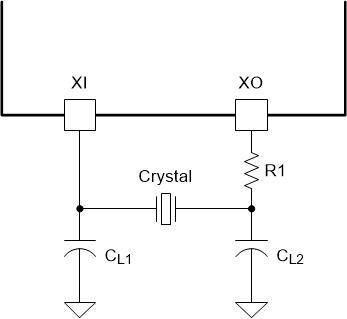SNLS647I December 2019 – August 2025 DP83826E , DP83826I
PRODUCTION DATA
- 1
- 1 Features
- 2 Applications
- 3 Description
- 4 Mode Comparison Tables
- 5 Pin Configuration and Functions (ENHANCED Mode)
- 6 Pin Configuration and Functions (BASIC Mode)
- 7 Specifications
-
8 Detailed Description
- 8.1 Overview
- 8.2 Functional Block Diagram
- 8.3
Feature Description
- 8.3.1 Auto-Negotiation (Speed/Duplex Selection)
- 8.3.2 Auto-MDIX Resolution
- 8.3.3 Energy Efficient Ethernet
- 8.3.4 EEE for Legacy MACs Not Supporting 802.3az
- 8.3.5 Wake-on-LAN Packet Detection
- 8.3.6 Low Power Modes
- 8.3.7 RMII Repeater Mode
- 8.3.8 Clock Output
- 8.3.9 Media Independent Interface (MII)
- 8.3.10 Reduced Media Independent Interface (RMII)
- 8.3.11 Serial Management Interface
- 8.3.12 100BASE-TX
- 8.3.13 10BASE-Te
- 8.3.14 Loopback Modes
- 8.3.15 BIST Configurations
- 8.3.16 Cable Diagnostics
- 8.3.17 Fast Link-Drop Functionality
- 8.3.18 LED and GPIO Configuration
- 8.4 Programming
- 8.5 Register Maps
- 9 Application and Implementation
- 10Device and Documentation Support
- 11Revision History
- 12Mechanical, Packaging, and Orderable Information
Package Options
Mechanical Data (Package|Pins)
- RHB|32
Thermal pad, mechanical data (Package|Pins)
- RHB|32
Orderable Information
9.2.4.1.2 Crystal
The use of a 25MHz, parallel resonant, 20pF load crystal is recommended if operating with a crystal. See Figure 9-4 for a typical connection diagram for a crystal resonator circuit. The load capacitor values vary with the crystal vendors; check with the vendor for the recommended loads. Refer to the application report Selection and specification of crystals for Texas Instruments ethernet physical layer transceivers for more details.
 Figure 9-4 Crystal Oscillator Circuit
Figure 9-4 Crystal Oscillator Circuit| PARAMETER | TEST CONDITIONS | MIN | TYP | MAX | UNIT |
|---|---|---|---|---|---|
| Frequency | 25 | MHz | |||
| Frequency tolerance | Including operational temperature, aging and other factors | –50 | 50 | ppm | |
| Load capacitance | 15 | 40 | pF | ||
| ESR | 50 | Ω |